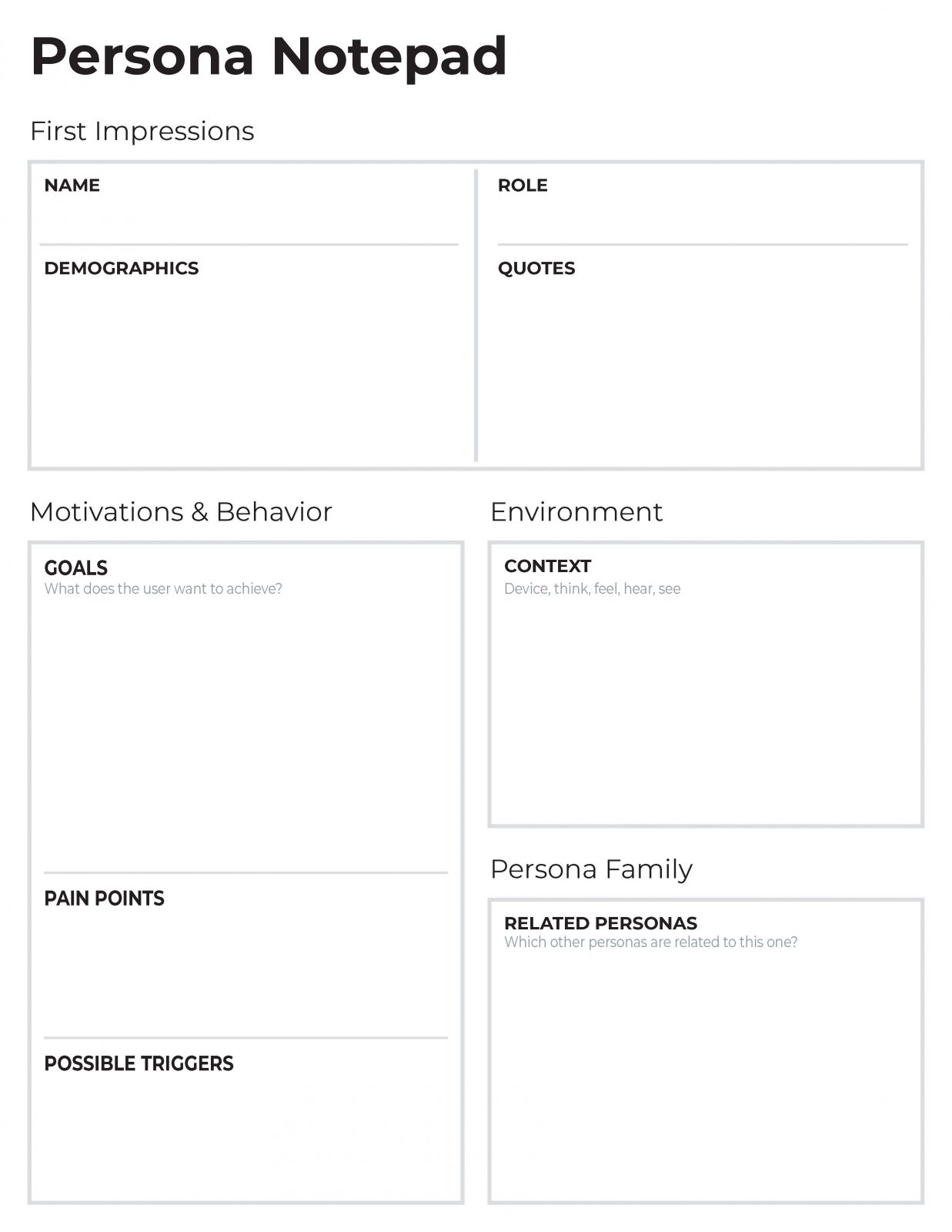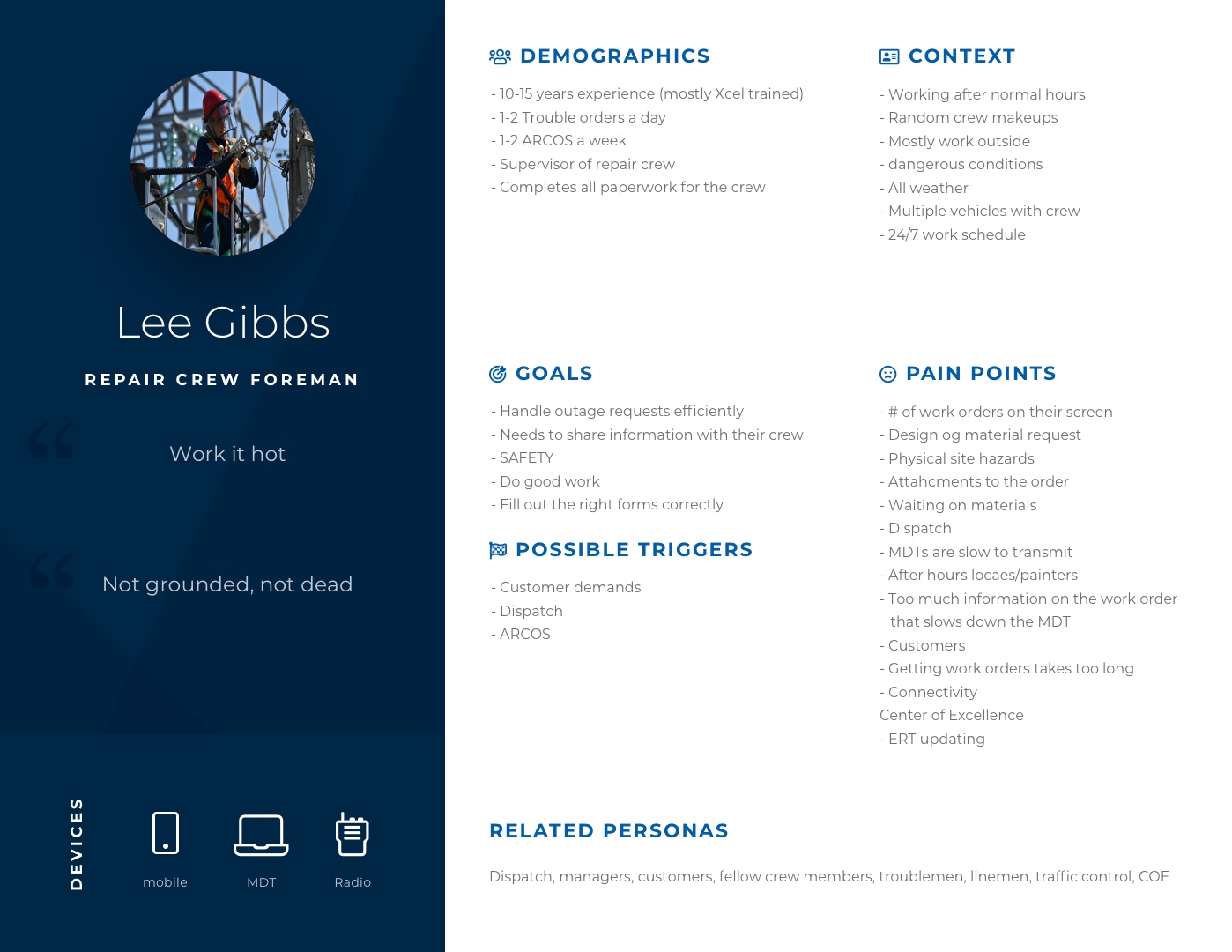The first step to creating a valuable user experience is research. Don’t know where to start? Read our UX Whitepaper by Dan Flesher about how to gather data in the best way possible.
You’ve completed user research, but now what? How can you make all this data you’ve gathered effective? One way to make sense of it is to create a user persona. User personas help you gain empathy for users and allow you to understand them on a deeper level.
Below, you’ll see the worksheet that we use in our Design Thinking sessions with clients and how to fill it in correctly:

First Impressions
Name: Preferably, this is the name of one of the real users that you observed. Using a real name helps you connect this information to a real user and allows for more empathy.
Demographics: This section is to get more data about the user outside of their job. Some examples of demographics you can collect are:
- Work experience (both time in this role and time in the field)
- Languages spoken
- Average age range
- Education (amount and type)
- Location
Quotes: What are some quotes you heard from your user when you were going through observations? Sometimes we hear something being said over and over again, like “I don’t trust the system” which gives us more insight than just going through their day-to-day tasks.
Motivations & Behaviors
Goals: What is the user trying to do? Is their goal to get a certain number of jobs done per day? Is it to complete their job safely? The persona will have multiple goals throughout their workday. Sometimes an app we are creating doesn’t directly relate to their goals, but we need to see what their main focus is throughout their day.
Pain Points: What is really troubling to the user? List aspects that make their job/task harder. What do they have to deal with during the workday that interrupts accomplishing their goals? Pain points allow us to see where users are having the most trouble and show us where the process can be improved.
Possible Triggers: These are things that make the user need to do their job or complete a task. A barista’s possible trigger is a customer coming to the counter to make their order. This trigger prompts them to complete a goal.
Environment
Context: What things are around your user? What devices are they currently using? Are they working in an office or out in the field? Do they have to wear gloves for their job? Is it a high-stress environment? Do they have a cheat sheet on their desk full of codes? Context allows you to see what is around the user. It would be careless to develop a desktop app for someone that is primarily working out in the field with a smartphone.
Persona Family
Related Personas: Who else is this user working with? Managers? customers? dispatch? Anyone they interact with is a related persona. If you are creating multiple personas for one application, this can show you how each persona interacts with the others.

Creating a persona is one small part of our Design Thinking sessions, but it is very important to really understand who you are designing for.
If you are interested in viewing similar articles, visit our blog, here.
View our LinkedIn, here.